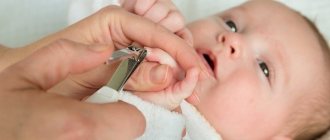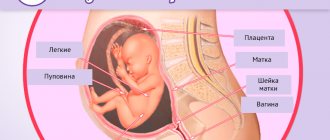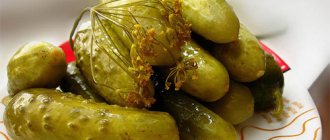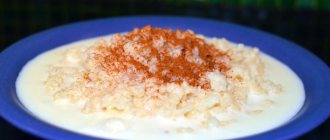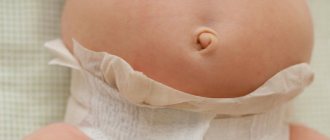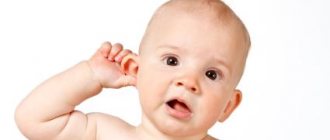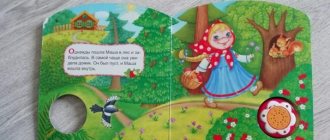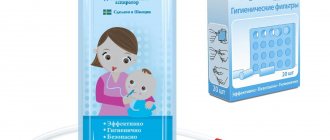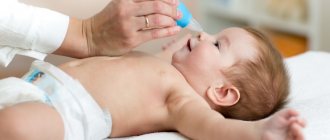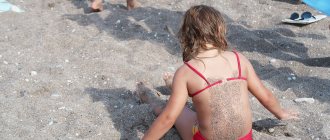Why do you clean a newborn's nose?
In the first few months of a baby's life, a procedure such as cleansing the nose is mandatory. This need is caused by the fact that the nasal passages of a newborn are very narrow, a lot of dust and mucus accumulate in them, which make breathing difficult and interfere with feeding and sleep. Even a tiny piece of lint from clothing can cause a toddler’s nose to become clogged. The baby does not know how to blow his nose, he is too weak and cannot cope with this problem on his own, so the help of his parents is necessary.
Causes of crust formation
The occurrence of dry boogers (crusts) in an infant is associated with its physiological characteristics. The mucous membrane of the nose constantly produces mucus, which is exposed to dust and other harmful substances from the outside. The air that small children inhale dries out these mucous secretions, resulting in the formation of crusts. Newborns do not know how to blow their nose and breathe through their mouths, so the occurrence of dry snot is inevitable.
The main reasons for the formation of crusts include:
- Colds, runny nose, which are accompanied by inflammatory processes of the nasal mucosa.
- The air in the room where the newborn is located is too dry.
You can reduce the appearance of crusts on your baby’s nose by following these tips:
- Control the air humidity (the optimal indicator is 50-60%) in the room where the baby is.
- Constantly ventilate your child's room, especially in winter, because at this time various heating devices are turned on, and the air in the room becomes hot and dry.
- Place several living plants on the windowsill in your baby’s room; they have a beneficial effect on the microclimate, moisturize and purify the air well.
- If possible, install a special device for humidifying the air in the room.
How to rinse a newborn's nose

A newborn baby feeds only on mother's milk. During breastfeeding, the baby breathes only through the nose, so nasal breathing should not be difficult. In this regard, it is necessary to know how to rinse a newborn’s nose.
Table of contents
|
Is it possible to rinse a newborn’s nose, why do it?
Nasal rinsing in newborn infants is an important procedure. This is due to the fact that the baby eats only mother's milk.
During the act of sucking, breathing occurs exclusively through the nasal passages.
The nose of babies is physiologically upturned, widened, the nasal passages diverge slightly to the sides during sucking.
All these conditions are necessary to facilitate breathing through the nose.
After birth, babies produce a lot of mucus in the first month.
This is a protective reaction to dust and other substances in the air that the child did not come into contact with in utero.
As you get older, your nasal mucosa adapts to its environment and begins to produce less mucus.
Another feature of newborns is regurgitation after feeding due to weakness of the esophagogastric sphincter.
Regurgitation may occur during sleep or wakefulness.
During regurgitation, regurgitated masses enter the nasal passages, since the baby is in a horizontal position.
For this reason, the nasal mucosa becomes irritated, swelling, nasal congestion, and crusts appear.
All this makes nasal breathing difficult and worsens the process of breastfeeding.
A child with nasal congestion grabs his chest to inhale air. Air enters the stomach during sucking and interception.
Aerophagia aggravates the situation, leading to even more severe regurgitation and greater nasal congestion.
Like older children, newborns can develop respiratory problems.
Viral agents infect the mucous membrane of the nasal passages, leading to the appearance of mucus and swelling.
With ARVI, the nose is also very stuffy, which interferes with feeding.
Since free nasal breathing plays an important role, rinsing the nose in newborns is mandatory if there is congestion.
How to rinse a newborn's nose
Nasal rinsing is carried out with small portions of saline solution. The liquid softens the crusts and makes them easier to remove.
For acute respiratory viral infections, saline solution helps reduce the concentration of viral particles.
It is recommended to buy saline solution at a pharmacy, as it must be sterile.
For babies, regular saline solution in bottles of 100, 200, 400 ml is suitable.
Useful tips for mothers: BABY HEALTH
These containers are large, so you can purchase a 0.9% sodium chloride solution in 5, 10, 20 ml ampoules.
These containers are easy to use and do not deteriorate from storage. Simple saline solution is not expensive.
There are also other forms specifically designed for infants:
- Aquamaris in drops;
- Aqualor baby drops;
- Linakva baby in drops;
- Marimer drops and others.
These products are much more expensive than regular saline, but they come in a convenient dropper design. For regular saline solution, you will need to buy a pipette.
For newborns, it is not advisable to prepare a saline solution yourself, since the salt concentration can be high.
Concentrated saline solutions damage the mucous membrane.
How to rinse a newborn baby's nose
To avoid complications, you need to know how to properly rinse a baby’s nose.
Improper implementation of the procedure for rinsing the nasal passages leads to otitis media, choking, respiratory arrest and other conditions.
Before carrying out the manipulation, you should prepare a saline solution, a pipette (if regular saline solution), an aspirator in the form of a pear or a container with a tube.
It is recommended to place a diaper on the changing table.
Place the newborn on his back with his legs facing you. Place your left hand under your head and slightly raise the head end so that the liquid flows smoothly into the oral cavity and not into the respiratory tract.
Next, you should take the saline solution into a pipette and drop 1 drop into each nasal passage.
After instillation, you need to take an aspirator and suck out the contents of the nasal passages.
Repeat this manipulation if necessary until the nasal passages are completely free.
Usually it is enough to drip and suck out the mucus 2-4 times.
If a child has a viral disease, it is necessary to rinse the nose every 2 hours.
In case of severe swelling of the nasal mucosa, it is recommended to use vasoconstrictor drops to improve the effectiveness of the manipulation.
Vasoconstrictor drops will improve the baby’s condition and prevent hypoxia and drying of mucus in the nose and larynx.
Do not instill more than 1 drop of liquid into each nasal passage. This can cause choking and respiratory arrest.
In infants, the nasal passages are connected to the inner ear cavity via the Eustachian tube.
The pipe has an almost horizontal position, so inflammation from the nose easily passes into the ear. This explains the frequent otitis in babies under one year old with improper care.
Due to this physiological feature, saline sprays with strong pressure cannot be used.
When can I wash it?
You should always rinse your nasal passages if there is congestion. Difficulty breathing through the nose has a bad effect on the breastfeeding process.
The baby may begin to spit up and refuse the breast. If the child regurgitates frequently, rinse the nose immediately after regurgitation.
Be sure to rinse the nasal passages during ARVI.
This will help relieve swelling, relieve congestion, and shorten the duration of a runny nose.
Rinsing is effective if there are crusts in the nose. The solution helps to soften them and remove them without damaging the mucous membrane.
It is not advisable to remove crusts from the nose in dry form.
Is it possible to instill breast milk into a newborn baby?
Many mothers believe that milk contains protective antibodies, so they actively instill milk secretions into the baby’s nose for medicinal purposes. Under no circumstances should this be done.
Milk is a breeding ground for bacteria, as it contains carbohydrates.
When milk secretions enter the nose, bacterial agents begin to multiply, causing bacterial rhinitis, which can lead to chronic ENT diseases in the future.
A woman's milk actually contains protective antibodies. It is much healthier and safer if the baby receives milk secretions inside.
Antibodies are absorbed only through the digestive tract, helping to boost immune defense.
How to prevent congestion
In order to prevent the occurrence of difficulty in nasal breathing, it is necessary to hold the baby upright after feeding.
This will help release air from the stomach and reduce the likelihood of regurgitation.
It is recommended to reduce the number of visits to public places and receptions. Contacts with people provoke the occurrence of ARVI in the child and mother.
It is recommended to feed the baby on demand. You can't keep your baby hungry. When a baby rushes to suck, he swallows more air.
Before feeding, you should express a little foremilk to make the breast softer and easier to latch on to.
In this case, the baby will not gasp, swallowing air.
Rinsing the nasal passages in itself is a preventive measure in the fight against respiratory diseases.
If you instill saline solution daily, the incidence of ARVI is reduced by 2 times.
Nasal rinsing is effective both for ARVI and for regurgitation. It is recommended to carry out the procedure correctly to avoid complications.
Before carrying out the manipulation, if you have no experience, it is better to consult a doctor. The doctor will show you how to do the procedure.
- about the author
- Recent publications
Olga Kuznetsova
author of the publication (site editor)
DOCTOR - PEDIATRIC Education: Siberian State Medical University. Certificate of specialist in the specialty "Pediatrics"
Olga Kuznetsova recently published (see all)
- At what age can a child have an omelet - 10/05/2020
- Hypoallergenic diet for mom - 10/03/2020
- How to introduce eggs into complementary foods for a child - 09/27/2020
How can you clean your baby's nose?
Cleansing manipulations of the respiratory tract are an unpleasant hygienic procedure for infants. He will turn his head and cry, and therefore you need to be extremely careful. Modern pediatricians, such as Dr. Komarovsky, do not recommend doing the following:
- Use your mouth to suck mucus out of your newborn's nose.
- Drip breast milk into the baby's nostrils, which can immediately develop microbes.
- Do not use cotton swabs or matches with cotton wool wrapped around them for cleaning; these devices can injure the baby’s nasal mucosa.
Before you start cleaning your newborn's nose, you need to prepare all the necessary items in advance. The choice of such devices for cleaning the respiratory tract depends on the degree of blockage of the nose, the age of the child, and the reason for the procedure (congestion, daily care). Let's look at the most common spout cleaning tools, their types and methods of use.
- Determine location by phone number
- Pomegranate bracelet salad classic recipe
- The usual freedom of Russians is going to be severely limited due to coronavirus
Aspirator
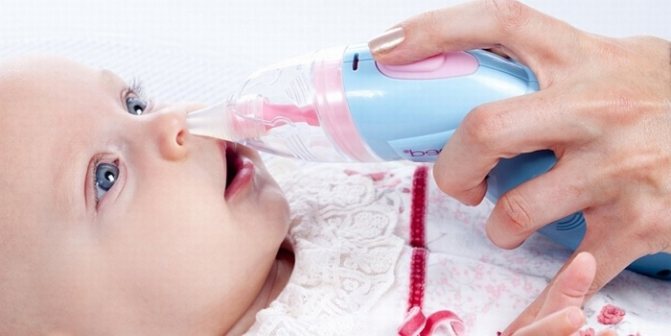
A special hygienic device for suctioning mucus in newborns, which does not cause discomfort, is called an aspirator. Before using this device, the spout is slightly moistened with a special solution. There are several types of aspirators:
- Mechanical. It is a small transparent container for snot with a straw and removable nozzles. One end of the tube is inserted into the newborn's nostril; through the second, the mother sucks in air and draws mucus from the nose into a special container.
- Electronic. This is a special battery-powered “pear” that, at the press of a button, pulls out snot. An electronic aspirator often has additional functions - humidification, aerosol.
- Vacuum. This device is used very rarely at home. In appearance, it resembles a mechanical aspirator, but it works by connecting to a special vacuum cleaner. It's inconvenient, noisy, cumbersome.
Aquamaris
To moisturize the mucous membrane of a newborn's nose and soften the crusts, use Aquamaris natural sea water. This drug can be used by infants under one year of age only in the form of drops; the spray is used for children over 1 year of age. Aquamaris drops contain many microelements and active substances, thanks to which the drug perfectly removes dust, takes care of the normal functioning of the nasal mucosa, and increases local immunity.
Syringe
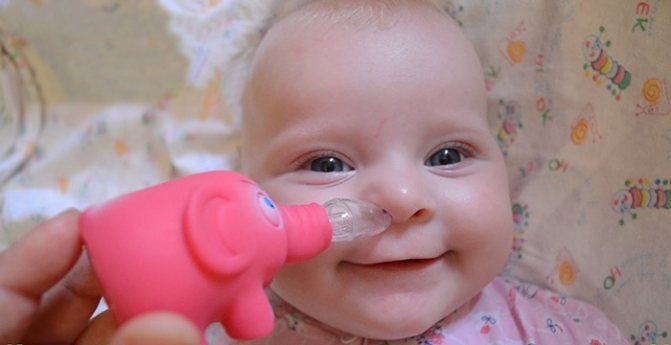
The easiest to use and most common aspirator is a syringe. In appearance, it resembles a regular “pear”, but has a special removable silicone tip. For newborns, small syringes with soft silicone nozzles are used. The principle of operation of the device is simple - you squeeze the syringe with your hand so that the air comes out of it, and then you need to insert the tip into the baby’s nostril, gently open the bulb and pump out the mucus.
- How to get a pension increase
- Free legal services for pensioners - types of consultations
- Validity of a medical certificate for drivers in 2019
Pear
This is a traditional device that our mothers and grandmothers used. It was made of dense rubber and had a thin and soft tip. Using such a device is inconvenient and traumatic for a newborn. Modern pears have been improved:
- they have a wide tip that does not go too deep into the nostril;
- The tip of the device is removable, it can be easily unscrewed and washed;
- The material of the bulb is silicone, which is much stronger than rubber and leads to less mucus suction force.
Cotton flagella
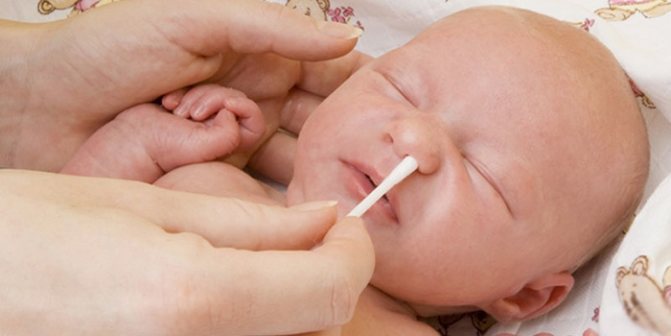
To remove small amounts of snot, crusts, and for daily hygiene procedures with a newborn, cotton pads are used. To make such a flagellum, you need to twist it from a piece of long cotton wool. Next, the device is lightly moistened with a special solution or sterile Vaseline and inserted into one nostril of the baby with slow rotational movements to a depth of 2 cm, then slowly and carefully removed. The procedure is repeated for the other nostril, but a new flagellum is used.
What you need to clean your baby's nose
This procedure is not pleasant for the baby, so you need to have everything you need at hand. The sooner the “test” ends, the better. Therefore, we prepare in advance:
- peach oil (or similar);
- boiled water or pharmaceutical liquid to moisturize and rinse the nose;
- cotton pads;
- clean sterile cotton wool.
It is not recommended to clean your baby's nose with cotton swabs or a match with cotton wool wrapped around them. This can damage the delicate mucous membrane. The best option is flagella twisted from cotton wool.
If the air in the apartment is dry, the mucus in the child’s nose begins to dry quickly, and hard crusts form. Since the nose is small and the passages are narrow, the air flows poorly, and the baby begins to worry and get nervous.
To remove these crusts without damaging the mucous membrane, you need to drop peach oil into your nose (it not only softens the crusts, but also relieves irritation). After some time, you can clean your nose with cotton swabs, gently turning them in each nostril, trying to act as carefully as possible.
Advice. To prevent boogers from forming in the nose, you need to monitor the air temperature in the room, maintain a humidity level of at least 40%, regularly wash the floors and wipe off dust (in a nursery it is better to do this every day). You can use humidifiers.
How to properly clean a baby's nose
In order not to harm the newborn, during the hygienic procedure for cleaning the spout, it is important to follow these rules:
- If the baby is capricious or crying, postpone the procedure until he calms down.
- Wash your hands thoroughly with children's antibacterial soap and wipe them dry.
- Prepare in advance all the necessary equipment and means for cleaning the newborn’s nose.
- A comfortable temperature for babies in the room is 20-21 degrees.
- Ensure normal humidity in the room.
- Make sure there is no dust in the room.
- Never insert the device too deeply into your baby's nose.
- Dried crusts need to be softened before stretching.
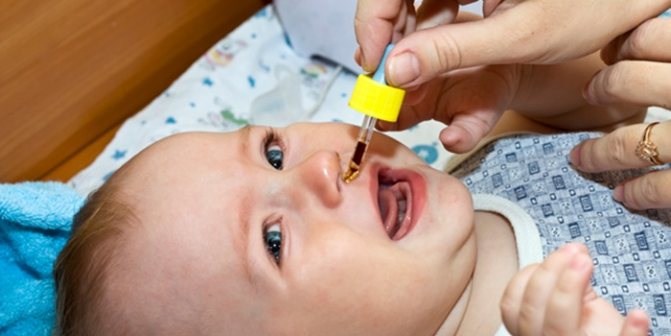
To make it easier for you to clean your baby’s nose, consider a detailed guide:
- The process of softening the crust and mucus. Apply drops of Aquamarine or saline solution to your newborn's nose. If you clean your nose in the evening, try giving your baby a warm bath, which will soften the mucus itself.
- Secure the baby's head. To do this, cover it with rolled up towels so that he cannot turn the head sharply.
- 2-3 minutes after instillation, clean the newborn’s nose with one of the following devices:
- Cotton tourniquet. Slowly insert the turunda into the nostril and twist it, then gently pull it out.
- Pear or syringe. Before cleaning the spout, pour boiling water over the device and wait until it cools down. Squeeze the bulb in your hands to release the air. Place the tip of the device on the baby's nasal passage and release the bulb clutched in your hands. Under pressure the mucus will come out. Then rinse the device and move on to the next nostril.
- Aspirator. Pour boiling water over all parts of the device and cool it. Place one part of the aspirator tube to the newborn's nostril, and draw air from the other side with your mouth.
When and how often to perform the procedure
You can clean your newborn’s nose and ensure normal breathing on your own. The frequency of cleansing of the nostrils is directly related to the individual characteristics of the child. Only by observing him can you determine at what time interval this procedure should be carried out. If the air in your home is dry, you should remove crusts from your nose more often.
A sign of their appearance is considered to be the baby snoring or difficulty breathing during feeding.
A video that will tell you how to clean a child’s nose using cotton swabs:
When you have a runny nose, your nasal passages swell, causing excessive mucus to be produced. At this time, it is imperative to clean your child’s nose. Sometimes the number of procedures reaches 3-4 times a day. If the baby dodges this unpleasant manipulation, you need to try to switch his attention to something interesting. For example, tell a poem or make a child laugh.
How often should you clean your nose?
The frequency of cleaning the baby’s nose depends on its individual physiological characteristics and the degree of congestion of the organ with snot. For some babies, once a day is enough, for others – several times. Perform cleaning procedures in the following cases:
- If there are dry crusts in the respiratory tract.
- When mucus has accumulated in the baby's nose.
- When a newborn’s nose is clogged, he breathes heavily and his nose can be heard “grunting.”
- If the baby burps during feeding and particles of milk get into the nose.
Why clean your spout?
Breathing disorders negatively affect the activity and calmness of the baby. A nose clogged with bugs prevents the child from eating and sleeping normally.
Why a newborn has a cold nose - reasons
When babies have difficulty breathing, they begin to intensively suck in air through their nostrils. This sometimes leads to complications - boogers can flow into the deep frontal maxillary sinuses or clog the lower respiratory tract.
Lack of hygiene of the nasal ducts in children can lead to increased intracranial pressure and seriously affect the decrease in the protective functions of the body.
Note! Infants with a constantly clogged nose experience a decrease in body weight, which leads to a lag in physical and mental development.
To avoid serious health problems, a mother should know how to clean boogers from her newborn baby’s nose. Even if the baby sneezes vigorously, he will not be able to independently reject the debris accumulated in his nose. Parents should clean it and carry out hygiene procedures regularly.
